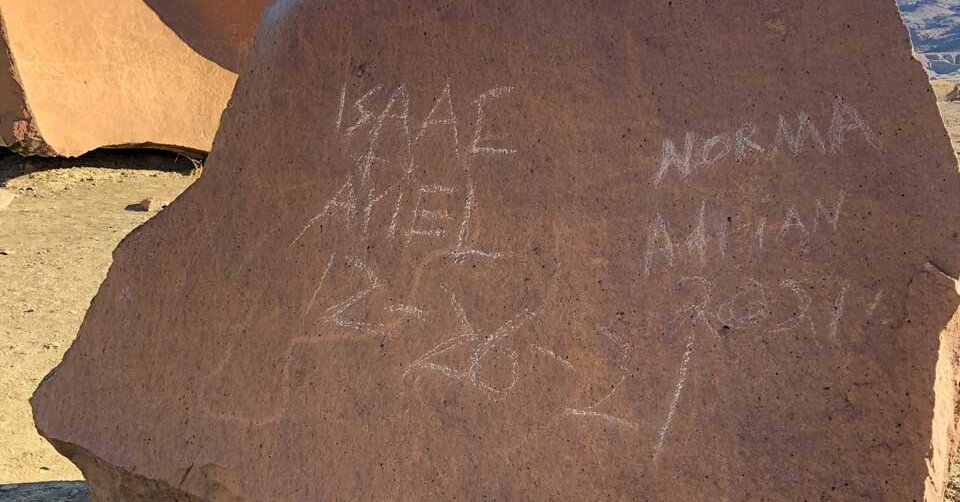
Abstract geometric designs at Big Bend National Park in Texas that had survived for thousands of years were “irreparably damaged” by vandals who scratched names and dates into the prehistoric designs, the National Park Service said.
The Park Service said on its website that the ancient rock art was damaged on Dec. 26 in the Indian Head area of the park, which encompasses more than 800,000 acres in southwest Texas and stretches along 118 miles of the United States border with Mexico.
Since 2015, archaeologists at the park have documented more than 50 instances of vandalism, the Park Service said.
Damaging park resources is against federal law and defacing rock art and ancient cultural sites violates the Archaeological Resources Protection Act, which aims to protect archaeological resources and sites on federal and Native American lands.
Tom Alex, an archaeologist who retired from the park in 2014 after working there for 32 years, said that the damaged abstract designs were known as petroglyphs and that they had been pecked into the rock panel.
“There’s wavy lines, curvilinear lines, geometric patterns, squiggles and things that just kind of meander across the rock surface,” Mr. Alex said on Saturday.
Mr. Alex said it was difficult to determine precisely how old the art was, but, based on the weathering, the petroglyphs were most likely made somewhere between 3,000 and 8,000 years ago. He said these types of designs represented some of the oldest rock art in North America. In the more recent time period, rock art included more representations of people and animals.
The abstract pecked art is common across the southwestern United States. It is not yet possible to determine what group of native people were responsible for the designs at Big Bend, Mr. Alex said.
It was also not known who damaged the rock art, though the person, or people, responsible left some clues. Four names were scrawled on the art: Adrian, Ariel, Isaac and Norma, according to photos shared by the Park Service. The year 2021 and the date “12-26-21” were also scratched on the rock.
Tom VandenBerg, the chief of interpretation and visitor services at Big Bend, told Texas Monthly that the park had received “pretty strong potential leads” about who was responsible for the vandalism. Mr. VandenBerg added that the park avoided providing maps and directions to the carvings to prevent damage to the ancient site.
Bob Krumenaker, the superintendent of Big Bend, condemned the vandalism in a post on the park’s website. “Damaging natural features and rock art destroys the very beauty and history that the American people want to protect in our parks,” he said.
Park staff members tried to repair the damage, but much of it was permanent, the post said.
Mr. Alex said some of the scratches on the panel were superficial and possible to clean up so they would be less obvious, but others had penetrated the prehistoric designs. “Those scratches are going to be there forever,” he said.
Stewards of public lands have complained about an increase in vandalism and graffiti in recent years.
In December 2020, Zion National Park in Utah said that nearly every day, staff members there found “words and shapes carved, drawn, painted (with mud, dirt, pigment, paint) or scratched on rocks.”
In January 2019, several of the signature spiky-leafed Joshua trees at Joshua Tree National Park in Southern California were damaged during a government shutdown.




